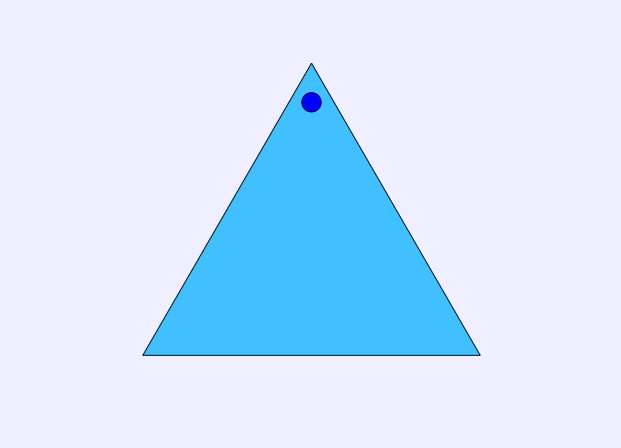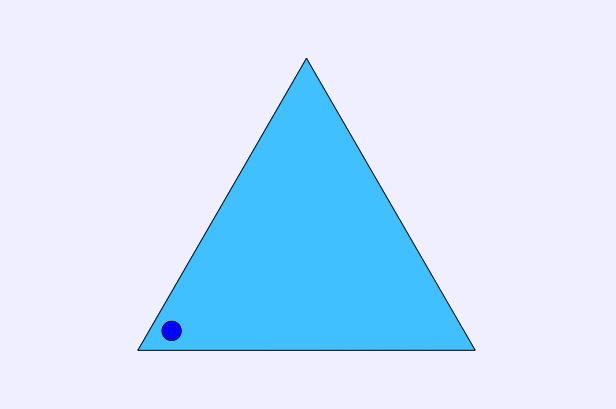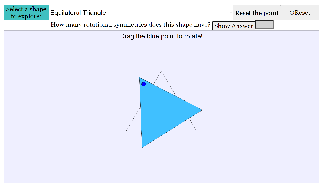Part of an epub Chapter 2: Round and Round the Merry-Go-Round - The Beauty That Emerges From Rotations
About
Chapter 2: Round and Round the Merry-Go-Round - The Beauty That Emerges From Rotations
In the previous chapter, the judge was tasked to look at some of the foreign visitors to determine the extent of their reflection symmetry.
What he has found, to his dismay, is that each and every one of them are at least more symmetrical than the vain queen. How so? Well, the queen, being human-shaped, has only one line of symmetry. But some of the mysterious visitors have as many as eight or twelve lines of symmetry!
While he ponders on the possible ways that he can deliver this news to the queen without being locked in the dungeons for life, the arrival of a second entourage of the mysterious beings was announced. They too were summoned by the queen for judgement.
Internally resigning himself to his fate, the judge turned to look at the next wave of beings here to be checked. Expecting yet another round of crushing despair at the perfect reflection symmetries of the strange beings, he was rather surprised by what fell upon his eyes.
While a few of them did have reflection symmetry as expected, his checks revealed that some of them had no reflection symmetry whatsoever. However, what should be a happy revelation turned into puzzling stares at the strange beings. Sure, some of them weren't symmetrical in the mirror, but they had some sort of... otherworldly beauty. So much so that it made the judge tilt his head in confusion.
And then it clicked.
In the following simulation, we explore another form of symmetry, called rotational symmetry. Similar to reflection symmetry, instead of an object looking the same under a mirror reflection, this symmetry is the property of an object looking the same under some rotation. Even though they are both symmetries, there are some main differences between reflection and rotational symmetry.
The first notable difference is that there is no concept of a "line of symmetry" in rotational symmetry. After all, a line of symmetry tells us where to reflect the object in order to see the symmetry, but there is no reflection in rotational symmetry.
The second difference is that instead of lines of symmetry, rotational symmetry has a different concept that reflection symmetry does not have. This concept is called the order of a rotational symmetry. More informally, the order of a rotational symmetry is the number of rotational symmetries that a shape has.
We can illustrate this by looking at a simple example - that of an equilateral triangle. To make it easier for us to count, we can mark one corner of the triangle with a point, like so:

Now, how can we rotate the triangle so that it will still look the same (pretend the point isn't there, it's just to help us count)? Well, one way is to rotate the triangle 120° to the left to obtain this triangle:

If we rotate another 120° in the same direction, this will give us yet another triangle different from the first two, as follows:

Observe that if we rotate yet another 120° in the same anti-clockwise direction, we end up back where we started, with the very first triangle above. Since we rotated the triangle 3 times, we say that the order of rotational symmetry for the equilateral triangle is 3.
In a nutshell, the order of rotational symmetry of a shape is the number of times you need to rotate the shape by a fixed nonzero angle (while keeping the shape looking the same at every step) to get back your original shape.
If you play around with shapes exhibiting rotation symmetry long enough, you may realize that there are some shapes where you can rotate a shape in multiple ways, and end up with different orders. For example, a regular hexagon (6-sided regular polygon) can be rotated in such a way that you get orders 2, 3 and 6. This is a feature, not a bug, and we shall address that later. In any case, if you end up with multiple values for the order, you should take the biggest one (more on this in a later chapter).
A special case would be if a shape has order 1. In other words, the only rotation that leaves the shape unchanged is the "do nothing" rotation. We say that the shape has no rotational symmetry in this case. We will see some of these in the simulation.
Remember, there is no rush to check all of the mysterious beings. The queen can wait for as long as you need. Have fun!
Translations
| Code | Language | Translator | Run | |
|---|---|---|---|---|
 |
||||
Software Requirements
| Android | iOS | Windows | MacOS | |
| with best with | Chrome | Chrome | Chrome | Chrome |
| support full-screen? | Yes. Chrome/Opera No. Firefox/ Samsung Internet | Not yet | Yes | Yes |
| cannot work on | some mobile browser that don't understand JavaScript such as..... | cannot work on Internet Explorer 9 and below |
Credits
Author name; Wei Chiong Tan
end faq
Sample Learning Goals
[text]
For Teachers
[text]
Research
[text]
Video
[text]
Version:
- http://weelookang.blogspot.sg/2016/02/vector-addition-b-c-model-with.html improved version with joseph chua's inputs
- http://weelookang.blogspot.sg/2014/10/vector-addition-model.html original simulation by lookang
Other Resources
[text]









